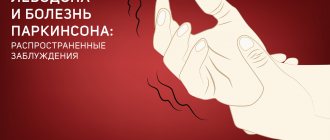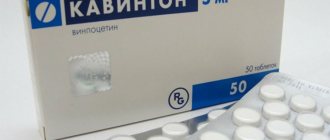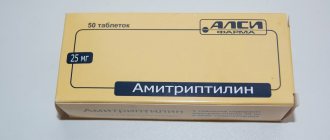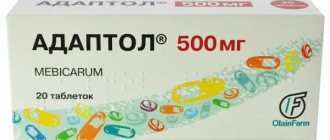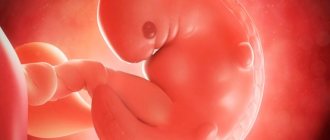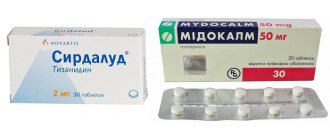Mechanism of action and pharmacokinetics
Mirtazapine has a tetracyclic structure and is classified as a noradrenergic and specific serotonergic antidepressant (NSSA). Acting as an antagonist of “inhibitory” central presynaptic α-2 autoreceptors, interfering with negative feedback and causing the release of norepinephrine. Blockade of heteroreceptors, α-2 receptors contained in serotonin neurons, enhances the release of serotonin, increasing the interaction between serotonin and 5-HT1 receptors and thereby promoting the anxiolytic effect of mirtazapine. Mirtazapine also acts as a weak antagonist of 5-HT1 receptors and as a strong antagonist of 5-HT2 (especially subtypes 2A and 2C) and 5-HT3 receptors. Blockade of these receptors may explain the lower incidence of side effects such as anxiety, insomnia and nausea, which are common with SSRI antidepressants. Mirtazapine also exhibits significant antagonism at histamine H1 receptors, resulting in sedation. Mirtazapine does not affect the reuptake of norepinephrine and serotonin, and also has minimal activity at dopaminergic and muscarinic receptors.
- Bioavailability about 50%
- Equilibrium concentration in the blood is established after 3–4 days
- Half-life 20-40 hours
- Actively metabolized in the liver by demethylation and oxidation followed by conjugation
- Metabolized by cytochromes P450 2D6, P450 1A2 and P450 3A4.
- Eating does not affect absorption
Buy Mirtazapine Canon tablets po 30 mg No. 30 in pharmacies
Instructions for use Mirtazapine tablet p.o 30 mg No. 30
Dosage forms tablets 30 mg Synonyms Calixta Remeron Group Antidepressants - non-selective inhibitors of neuronal uptake International nonproprietary name Mirtazapine Composition Active substance: mirtazapine 30 mg, in the form of mirtazapine hemihydrate 31 mg. Manufacturers Canonpharma Production (Russia) Pharmacological action Mirtazapine is an antidepressant of a tetracyclic structure with a predominantly sedative effect. The drug is most effective for depressive conditions with the presence in the clinical picture of symptoms such as an inability to experience pleasure and joy, loss of interest (anhedonia), psychomotor retardation, sleep disturbances (especially in the form of early awakenings) and weight loss, as well as other symptoms: suicidal thoughts and diurnal mood swings. The antidepressant effect of the drug usually occurs after 1-2 weeks of treatment. Pharmacodynamics. Mirtazapine is an antagonist of presynaptic alpha2-adrenergic receptors in the central nervous system and enhances central noradrenergic and serotonergic transmission of nerve impulses. In this case, the enhancement of serotonergic transmission is realized only through 5-HT1 receptors. since mirtazapine blocks 5-HT2 and 5-HT3 receptors. Both enantiomers of mirtazapine are believed to have antidepressant activity, the S(+) enantiomer by blocking alpha2 and 5-HT2 receptors, and the R(-) enantiomer by blocking 5-HT3 receptors. The sedative properties of mirtazapine are due to its antagonistic activity towards H1-histamine receptors. Mirtazapine is generally well tolerated. It has virtually no m-anticholinergic activity and in therapeutic doses has a limited effect on the cardiovascular system (for example, orthostatic hypotension). Pharmacokinetics. Suction. After oral administration of the drug, mirtazapine is rapidly absorbed (bioavailability about 50%), reaching maximum plasma concentrations after approximately 2 hours. Distribution. About 85% of mirtazapine is bound to plasma proteins. A stable concentration of the substance is achieved after 3-4 days and thereafter it does not change. In the recommended dose range, the pharmacokinetic parameters of mirtazapine have a linear relationship with the administered dose of the drug. Metabolism. Mirtazapine is extensively metabolized. The main pathways of its metabolism in the body are demethylation and oxidation followed by conjugation. Cytochrome P450-dependent isoenzymes CYP2D6 and CYP1A2 are involved in the formation of the 8-hydroxy metabolite of mirtazapine, while the CYP3A4 isoenzyme presumably determines the formation of N-demethylated and N-oxidized metabolites. De-methylmirtazapine is pharmacologically active and appears to be pharmacokinetically similar to the parent compound. Excretion. Mirtazapine is excreted by the kidneys and intestines over several days. The average half-life is 20 to 40 hours (rarely up to 65 hours). A shorter half-life is observed in young people. Mirtazapine clearance is reduced in patients with renal or hepatic impairment. Side effects Patients with depression experience a range of symptoms due to the disease, so it is sometimes difficult to distinguish between symptoms associated with the disease and symptoms caused by the use of the drug. Disorders of the blood and lymphatic system. Frequency not established: suppression of hematopoiesis (granulocytopenia, agranulocytosis, aplastic anemia and thrombocytopenia), eosinophilia. Endocrine system disorders. Frequency not known: impaired secretion of antidiuretic hormone. Metabolic and nutritional disorders. Very often: increased appetite and weight gain; frequency not known: hyponatremia. Nervous system disorders. Very common: drowsiness (may lead to impaired concentration) more common in the first weeks of treatment (dosage reduction usually does not lead to a decrease in sedative effect, but may reduce the effectiveness of the antidepressant), sedation, headache. Common: lethargy, dizziness, tremor; infrequently; paresthesia, restless legs syndrome, fainting; rarely: myoclonus; frequency not known: convulsions, serotonin syndrome, paresthesia of the oral mucosa, articulation disorder. Mental disorders. Common: unusual dreams, confusion, anxiety, insomnia; uncommon: nightmares, mania, agitation, hallucinations, psychomotor agitation (including akathisia, hyperkinesia); rarely: aggressiveness; frequency not known: suicidal thoughts, suicidal behavior. Vascular disorders. Common: orthostatic hypotension; uncommon: decreased blood pressure. Gastrointestinal disorders. Very common: dry mouth; often: nausea, vomiting, diarrhea; uncommon: hypoesthesia of the oral mucosa; frequency not known: swelling of the oral mucosa, increased salivation. Disorders of the liver and biliary tract. Rarely: increased activity of liver enzymes. Skin and subcutaneous tissue disorders Common: skin rash; frequency not known: Stevens-Johnson syndrome, bullous dermatitis, erythema multiforme, toxic epidermal necrolysis. Musculoskeletal and connective tissue disorders. Common: back pain, arthralgia, myalgia. General disorders and disorders together with introduction. Common: local swelling; uncommon: fatigue; frequency not known: generalized or local edema. Typically, anxiety and insomnia (which can be symptoms of depression) may develop or worsen when treated with antidepressants. Development or worsening of anxiety has been reported very rarely during treatment with mirtazapine. When evaluating data from clinical studies, transient increases in transaminases and gamma-glutamyl transpeptidase levels were observed (however, no adverse reactions were reported associated with mirtazapine, which occurred at a higher frequency than with placebo). In addition, the following adverse reactions may occur: withdrawal syndrome, urticaria, thirst. Indications for use Depressive conditions (including anhedonia, psychomotor retardation, insomnia, early awakening, weight loss, loss of interest in life, suicidal thoughts and mood lability). Contraindications Hypersensitivity to mirtazapine or other components of the drug; age under 18 years (efficacy and safety have not been established); simultaneous use with monoamine oxidase inhibitors (MAO). Directions for use and dosage: The tablets should be taken orally, without chewing, with a small amount of water. Food intake does not affect the pharmacokinetics of the drug. The half-life of mirtazapine is 20-40 hours and therefore the drug is suitable for once-daily dosing. It is preferable to take the daily dose of the drug in one dose, before going to bed at night. Mirtazapine can also be prescribed twice daily, dividing the daily dose in half (morning and night). Treatment with the drug should, if possible, be continued for 4-6 months until symptoms disappear completely. After this, treatment can be gradually withdrawn. The drug begins to have an effect after 1-2 weeks of treatment. Treatment with an adequate dose should lead to a positive response within 2-4 weeks. If the response to treatment is insufficient, the dose can be increased to the maximum dose (45 mg). If there is no response to treatment, treatment should be discontinued after another 2-4 weeks. Adults. The recommended initial daily dose is 15 mg/day or 30 mg/day, which is gradually increased if necessary to 45 mg/day. Elderly. The recommended dose is the same as for adults. In elderly patients, in order to achieve a satisfactory and safe response to treatment, dose increases should be made under the direct supervision of a physician. Patients with renal and liver failure. In patients with renal or hepatic impairment, the clearance of mirtazapine may be reduced. This should be taken into account when prescribing the drug to this category of patients. Overdose Toxicity studies indicate the absence of clinically significant cardiotoxic effects in case of drug overdose. Symptoms: Depression of the central nervous system, accompanied by disorientation and prolonged sedation, hallucinations, tachycardia, moderate increase or decrease in blood pressure. There is a possibility of more severe disturbances in the physiological functions of the body, which can lead to fatal outcomes at doses much higher than the therapeutic dose, especially in mixed overdoses. Treatment: In case of overdose, symptomatic therapy should be carried out aimed at maintaining the vital functions of the body. It is recommended to take activated carbon and gastric lavage. Interaction Pharmacokinetic interaction Mirtazapine is extensively metabolized with the participation of the CYP2D6 and CYP3A4 isoenzymes, and to a lesser extent with the participation of the CYP1A2 isoenzyme. A study of the interaction of mirtazapine with paroxetine in healthy volunteers showed that paroxetine, which is an inhibitor of the CYP2D6 isoenzyme, does not affect the pharmacokinetics of mirtazapine at steady state. The use of mirtazapine in combination with the strong CYP3A4 inhibitor, ketoconazole, increased the maximum plasma concentration levels and the area under the concentration-time curve of mirtazapine by approximately 40% and 50%, respectively. Caution should be exercised when mirtazapine is used in combination with strong CYP3A4 inhibitors, such as HIV protease inhibitors. azole antifungal drugs, erythromycin or nefazodop. Carbamazepine and phenytoin, inducers of the CYP3A4 enzyme, increased the clearance of mirtazapine by approximately twofold, which led to a 45-60% decrease in mirtazapine plasma concentrations. If carbamazepine or another inducer of hepatic metabolism (eg, rifampicin) is added to mirtazapine therapy, the dose of mirtazapine may need to be increased. If treatment with this drug is stopped, the dose of mirtazapine may need to be reduced. When using the drug in combination with cimetidine, the bioavailability of mirtazapine can increase by more than 50%. The dose of mirtazapine may need to be reduced when starting treatment in combination with cimetidine or increased when treatment with cimetidine is discontinued. In in vivo studies, mirtazapine had no effect on the pharmacokinetics of risperidone or paroxetine (CYP2D6 substrate), carbamazepine and phenytoin (CYP3A4 substrate), amitriptyline and cimetidine. When mirtazapine was co-administered in combination with lithium, no significant clinical effects were observed, as well as changes in the pharmacokinetics of both drugs. Pharmacodynamic interaction. Mirtazapine should not be used in combination with monoamine oxidase inhibitors (MAOIs) or within two weeks after stopping treatment with MAOIs. Treatment with MAO inhibitors should begin no earlier than 2 weeks after stopping treatment with mirtazapine. Mirtazapine may enhance the sedative properties of benzodiazepines and other sedatives (in particular, most antipsychotics, H1-histamine receptor antagonists, opioids). Mirtazapine may enhance the depressant effect of alcohol on the central nervous system, so patients should be warned to avoid drinking alcohol. Concomitant use with other serotonergic drugs (for example, L-tryptophan, triptan, tramadol, linezolid, selective serotonin reuptake inhibitors, venlafaxine, lithium preparations, St. John's wort (Hypericum perforatum) preparations) may lead to the development of serotonin syndrome. Mirtazapine at a dose of 30 mg once daily caused a small but statistically significant increase in INR (International Normalized Ratio) in patients treated with warfarin. A more pronounced effect with a higher dose of mirtazapine cannot be excluded. It is recommended to monitor MHO in case of treatment with warfarin in combination with mirtazapine. Special instructions Use caution. Correction of the dosage regimen and regular medical monitoring are necessary for the following categories of patients: patients with epilepsy and organic brain lesions (during drug therapy, in rare cases, the development of convulsive conditions is possible); in patients with liver or kidney failure; in patients with heart disease (conduction disorders, angina pectoris or recent myocardial infarction); in patients with cerebrovascular diseases (including a history of ischemic attacks); in patients with arterial hypotension and conditions predisposing to hypotension (including dehydration and hypovolemia); in patients who abuse drugs, with drug dependence, mania, hypomania. Like other antidepressants, mirtazapine should be used with caution in the following cases: urinary disorders, including prostatic hyperplasia; acute angle-closure glaucoma and increased intraocular pressure; diabetes; hyponatremia. Pregnancy and breastfeeding period. The safety of mirtazapine during pregnancy has not been established, therefore the drug should be prescribed during pregnancy only in cases where the benefit to the mother outweighs the potential risk to the fetus, treatment should be carried out under the supervision of a physician. The use of serotonin reuptake inhibitors during pregnancy, especially in later stages, may increase the risk of developing persistent pulmonary hypertension of the newborn. It is unknown whether mirtazapine is excreted in breast milk, so use of the drug during breastfeeding is not recommended. Suicide/suicidal thoughts or clinical worsening of the disease. In young people (under 24 years of age) with depression and other mental disorders, antidepressants, compared with placebo, increase the risk of suicidal thoughts and behavior, so when prescribing the drug to such patients, the risk of suicide should be weighed against the benefits of using the drug. In short-term studies, the risk of suicide did not increase in people over 24 years of age, but in patients over 65 years of age it decreased slightly. Any depressive disorder itself increases the risk of suicide, so during treatment the patient should be monitored to identify disturbances or changes in behavior, as well as suicidal tendencies. Taking into account the possibility of suicide, especially at the beginning of treatment, the patient should be prescribed the smallest number of tablets of the drug in order to reduce the risk of overdose. Suppression of bone marrow functions. Bone marrow suppression, usually manifested as granulocytopenia or agranulocytosis, is rarely observed with mirtazapine, appears mostly after 4-6 weeks of treatment and is reversible after discontinuation of treatment. The physician should pay close attention (and inform the patient) to symptoms such as fever, sore throat, stomatitis, and other signs of influenza-like syndrome. If such symptoms appear, you must stop treatment and have a blood test done. Jaundice. If signs of jaundice appear, treatment with the drug should be interrupted. Conditions requiring medical supervision. The drug should be prescribed with caution, and patients should be regularly and carefully monitored for the following conditions: Epilepsy and organic brain lesions. Although clinical experience shows that epileptic seizures are rare during treatment with mirtazapine and other antidepressants, the drug should be used with caution in patients with a history of epileptic seizures. Liver failure. When mirtazapine was administered orally at a dose of 15 mg, the clearance of mirtazapine was reduced by approximately 35% in patients with mild to moderate hepatic impairment compared with patients with normal hepatic function. The mean plasma concentration of mirtazapine increased by approximately 55%. Kidney failure. When mirtazapine was administered orally at a dose of 15 mg in patients with moderate (creatinine clearance 10-40 ml/min) or severe renal insufficiency (creatinine clearance less than 10 ml/min), the clearance of mirtazapine was reduced by approximately 30% and 50%, respectively, according to compared to healthy patients. The mean plasma concentrations of mirtazapine increased by 55% and 115%, respectively. In patients with mild renal failure (creatinine clearance 40-80 ml/min), no significant differences were observed compared with the control group. Heart diseases such as conduction disorders, angina pectoris and recent myocardial infarction. In these cases, the usual precautions are required when prescribing the drug and concomitant therapy. Reduced blood pressure. Diabetes. In patients with diabetes, antidepressants may affect blood glucose levels. Adjustment of the dose of insulin and/or dose of oral hypoglycemic drugs may be required. Close monitoring is recommended. As with other antidepressants, the following conditions may occur when using the drug: Worsening of psychotic symptoms may occur when antidepressants are used to treat patients with schizophrenia or other mental disorders. Paranoid ideas may increase. The depressive phase of bipolar affective disorder during treatment can transform into a manic phase. Although antidepressants are not addictive, based on post-marketing experience, it appears that abrupt discontinuation of therapy after prolonged use may cause withdrawal symptoms. Most withdrawal symptoms are mild and self-limiting. The most commonly reported withdrawal symptoms were: dizziness, nausea, headache and malaise, agitation, and anxiety. Although these symptoms have been reported as “withdrawal” symptoms, it should be understood that these symptoms may be related to an underlying medical condition. It is recommended to stop treatment with the drug gradually. The drug should be prescribed with caution to patients with urinary disorders, incl. with prostatic hypertrophy, as well as in patients with acute angle-closure glaucoma and increased intraocular pressure (however, a negative effect of the drug is unlikely due to the fact that the anticholinergic activity of mirtazapine is very weak). Akathisia/psychomotor agitation. The use of antidepressants is associated with the development of akathisia, which is characterized by subjectively unpleasant or anxious arousal with increased motor activity. These symptoms are most likely to appear during the first few weeks of treatment. Increasing the dose in this case may have a negative impact on the patient's health. Hyponatremia. Extremely rare cases of hyponatremia have been reported with the use of mirtazapine. In patients at risk (elderly or patients taking drugs that can cause hyponatremia), the drug should be prescribed with caution. Serotonin syndrome. With the simultaneous use of selective serotonin reuptake inhibitors and other serotonergic drugs, serotonin syndrome may occur. Symptoms of serotonin syndrome may include fever, rigidity, myoclonus, autonomic nervous system dysfunction with possible rapid fluctuations in vital signs, mental status changes including confusion, irritability and agitation, progressive confusion, and coma. Caution and close clinical monitoring should be used when these drugs are coadministered with mirtazapine. If such symptoms appear, you should stop treatment with the drug and begin symptomatic treatment. Based on post-marketing experience, it appears that serotonin syndrome occurs very rarely in patients receiving ionotherapy with mirtazapine. Use in elderly patients. Elderly patients are usually more sensitive, especially to side effects. Clinical studies have not shown that elderly patients experience side effects more frequently than other age groups, but they may be more severe, but data are still limited. Patients are advised to avoid the use of alcohol during treatment with the drug. Caution should be used when prescribing benzodiazepines concomitantly with mirtazapine. Impact on the ability to drive vehicles and machinery. During treatment with the drug, you should avoid performing potentially hazardous activities that require a high speed of psychomotor reactions, such as driving vehicles or other mechanisms. Storage conditions Store in a dry place, protected from light, out of reach of children at a temperature not exceeding 25 C.
Treatment regimen
◊ Dosage and dose selection
- For depression: 15-45 mg/day
- Initial dose – 15 mg in the evening; increase every 1-2 weeks until the effect is achieved; maximum – 45 mg/day
- Sedation will not increase with increasing dose
- Crushing the 15 mg tablet into two halves will increase sedation [1].
- For hot flashes: 7.5 mg-60 mg
- Insomnia/PTSD: 15-45 mg
- If anxiety, insomnia, agitation, or akathisia occur at the beginning of treatment or after interruption of treatment, the possibility of bipolar disorder should be considered and switched to a mood stabilizer or an atypical antipsychotic
◊ How quickly it works
- In patients with insomnia and anxiety, it may take immediate effect.
- Begins to act after 2-4 weeks
- If there is no effect after 6-8 weeks, you need to increase the dose or switch to another drug
- To prevent relapse, it can be taken for many years.
◊ Expected result
- Complete remission.
- After the symptoms of depression disappear, you should continue taking it for one year if this was the treatment of the first episode. If this is to treat a recurrent episode, treatment can be extended indefinitely.
- Use in the treatment of anxiety may be indefinite.
◊ If it doesn't work
- Change the dose, switch to another medicine or add an auxiliary drug;
- Connect psychotherapy;
- Review the diagnosis by identifying comorbid conditions;
- In patients with undiagnosed bipolar affective disorder, the effectiveness of treatment may be low, in which case it is necessary to switch to a mood stabilizer [1].
◊ How to stop taking it
It can be reduced gradually, but there is no need [1].
◊ Treatment combinations
- For fatigue, drowsiness, loss of concentration: modafinil [3].
- Use combinations with other antidepressants with caution because they may precipitate bipolar disorder and suicidal ideation.
- Combination with venlafaxine (“California Rocket Fuel”) is a strong combination, but watch for risk of bipolar disorder and suicidal ideation [1]
- Benzodiazepines
- For bipolar depression, psychotic depression, treatment-resistant depression, treatment-resistant anxiety disorder: mood stabilizers, atypical antipsychotics
- For anxiety disorder: gabapentin, tiagabine
Indications for use
Mirtazapine should be used strictly according to indications, because it is a potent drug. These include:
- depressive states accompanied by insomnia, early awakening, rapid loss of body weight;
- anhedonia;
- obsessive-compulsive disorders;
- biological psychomotor retardation;
- loss of interest in life, suicidal thoughts, mood lability, irritability;
- chronic fatigue;
- anxiety disorders.
Special patient groups
◊ Patients with kidney problems
With caution [1].
◊ Patients with liver disease
- Carefully;
- Lower doses are recommended [1].
◊ Patients with heart disease
- Carefully;
- Consider the risk of low blood pressure [1].
◊ Elderly patients
For some patients, it is better to stay at low doses [1].
◊ Children and teenagers
- Safety and benefit have not been proven
- It is necessary to regularly and personally check the patient's condition, especially in the first weeks of treatment.
- Inform adults about the risks.
◊ Pregnant women
- There have been no adequate studies in pregnant women [1].
- Not recommended for pregnant women, especially in the first trimester
- All risks should be weighed and compared
◊ Breastfeeding
- The medicine passes into breast milk.
- If the infant shows signs of irritation or sedation, stop feeding or taking mianserin
- However, treatment after childbirth may be necessary, so the risks should be weighed.
Calixta
Another antidepressant drug based on mirtazapine, which can be chosen as an analogue. Prescribed for mild to moderate depression. Physician supervision is required in the first weeks of treatment. The cost of the drug is from 951 to 1011 rubles per package.
Composition and release form
The active ingredient is mirtazapine at concentrations of 15, 30 and 45 mg per tablet. Auxiliary components include lactose monohydrate, hyprolose, starch, silicon dioxide, magnesium stearate.
Available in the form of tablets, packaged in aluminum or polymer plates, one or two blisters in cardboard packaging.
Contraindications
Contraindications for use are similar to Mirtazapine - hypersensitivity to the drug and simultaneous treatment with monoamine oxidase inhibitors.
Application
Taken orally, without chewing, in elderly patients, as well as in cases of impaired renal or liver function, dose adjustment is necessary. Take at the same time of day, once. Sometimes it is necessary to divide the dosage into two doses per day.
Adverse reactions
The most common symptoms are headaches, fatigue, lethargy, problems falling asleep, and nightmares. There may be disturbances in the functioning of the hematopoietic system, which is manifested by pallor and muscle weakness.
Side effects and other risks
◊ Mechanism of side effects
Most side effects occur immediately after starting treatment and go away over time, while the therapeutic effects increase over time. The action on the histamine receptor explains the sedation.
◊ Side effects
- Dry mouth, constipation, increased appetite
- Sedation, unusual dreams
- Low pressure
- Dangerous side effects: seizures, blood dyscrasia, mania
- Weight gain: very common
- Sedation: very common (worsens over time)
- Sexual dysfunction: no
◊ What to do about side effects
- Wait;
- Change drug [1].
◊ Long-term use
Safely
◊Addiction
Not expected.
◊ Overdose
- Rare cases of fatal overdoses have been associated with the use of mirtazapine along with other substances
- Sedation, disorientation, memory impairment.
Analogues of the drug
Mirtazapine has a number of analogues based on the same active ingredient. Their cost varies depending on the manufacturer and concentration, the number of tablets in the package. The cost of Mirtazapine is from 517 to 635 rubles. List of analogues:
- Remeron;
- Calixta;
- Miaser;
- Asentra;
- Azafen.
Only the attending physician should select analogues, taking into account the severity and duration of the disease - independent choice of the drug is fraught with a deterioration in well-being.
Azafen
An antidepressant of tricyclic nature, used for depressive states of varying severity, depression, manic-depressive psychosis, melancholy, anxiety, insomnia. Refers to synonyms, but not structural analogues of Mirtazapine.
Release form and composition
One tablet contains 25 mg of the active substance - pipofezin.
Auxiliary components are cellulose, lacose, potato starch, povidone, magnesium stearate. Ten tablets are dispensed in a blister, from three to five blisters in a cardboard package. Polymer jars contain 300, 250, 200 and 100 tablets.
Contraindications
Prohibited for use in case of hypersensitivity, insufficiency of renal and hepatic function, when carrying a child and breastfeeding, simultaneously with monoamine oxidase inhibitors.
Application
Initial dosages are set by the attending physician and are divided into two doses. Take morning and afternoon. As the dosage increases, an evening dose before bed is added. Having achieved the desired effect, they switch to small dosages as maintenance treatment for several months.
Miaser
A new generation antidepressant from the group of piperazine-azepine compounds. The cost of the drug is significantly lower than Mirtazapine - from 180 to 475 rubles per pack.
Composition and release form
The active ingredient is mianserin hydrochloride. Excipients are silicon dioxide, potassium dihydrate, magnesium stearate, corn starch, purified water. Shell made of hypromelose and cellose.
Available in the form of tablets of 10, 30 and 60 mg of mianserin. The tablets are white, biconvex, with a score in the middle. There are ten tablets in one polymer blister, two blisters in a cardboard package.
Contraindications
Miaser is not prescribed for severe liver dysfunction, as well as for severe manic syndromes and conditions.
Application
Take orally with water. The minimum therapeutic dosage is set by the attending physician, the maximum dosage is 90 mg. Take before bed, the effect develops three hours after administration. Can be divided into several doses per day.
It is forbidden to combine the drug with alcohol due to the fact that Miaser enhances the effect of alcohol on the body.
Side effects
Changes in the qualitative composition of the blood are possible - agranulocytosis, granulocytopenia. There may be weight gain, hypomania, and prolonged sedation. In this case, reducing the concentration of the drug will not eliminate the sedative effect, but will reduce the effectiveness of the drug.
Reactions from the cardiovascular system such as bradycardia, ventricular tachycardia, and arterial hypotension are possible. Reactions such as hepatitis, jaundice, and increased concentrations of liver enzymes may occur. Other undesirable effects include: skin exanthema, arthralgia, swelling of the extremities.
Special instructions for the use of the drug Mirtazapine
The results of experimental studies indicate the absence of a teratogenic effect, however, there are no clinical data on the effectiveness and safety of mirtazapine during pregnancy and lactation. The drug is prescribed with caution to patients with epilepsy and organic brain lesions, with impaired liver and/or kidney function, patients with angina pectoris and/or recent myocardial infarction, with cardiac conduction disorders, with arterial hypotension, with urinary disorders due to prostate hypertrophy, patients with acute angle-closure glaucoma and increased intraocular pressure, with diabetes mellitus. When using mirtazapine in patients with schizophrenia or other psychotic disorders, psychotic symptoms and delusional experiences may increase. When treating the depressive phase of biopolar affective disorders, this condition can progress to the manic phase. It should be borne in mind that if symptoms such as fever, sore throat, stomatitis develop while taking mirtazapine, treatment should be stopped immediately. Abrupt withdrawal of mirtazapine after long-term use can lead to nausea, headache and a general deterioration in health. During treatment with mirtazapine, you should refrain from drinking alcohol. Mirtazapine should be prescribed with caution to patients engaged in potentially hazardous activities that require increased attention and speed of psychomotor reactions (including driving).
Interaction
During treatment with Mirtazapine, it is necessary to discontinue the use of MAO inhibitors . In addition, after completing treatment, you should refrain from using them for another 2 weeks.
The combination of Mirtazapine and selective serotonin reuptake inhibitors , serotonergic active substances, for example: L-tryptophan, Triptan, Tramadol, Linezolid, Venlafaxine, Lithium and preparations containing St. John's wort, can cause serotonin-mediated effects. Therefore, care must be taken and the patient’s condition must be constantly monitored.
The drug enhances the sedative effect of benzodiazepines and other sedatives.
Simultaneous treatment with Carbamazepine, Phenytoin, and CYP3A4 inducers increases the clearance of Mirtazapine by almost 2 times, which leads to a decrease in its concentration in the blood plasma. Therefore, after discontinuation of these drugs, it may be necessary to reduce the dosage of Mirtazapine.
At the same time, the powerful CYP 3A4 inhibitor Ketoconazole, HIV protease inhibitors , azole antifungals , Erythromycin, Cimetidine or Nefazodone increase the concentration of Mirtazapine, which requires a dose adjustment downward.
Taking Paroxetine, Amitriptyline, and Risperidone does not have any particular effect on the body due to the absence of significant drug interactions.
Overdose
In cases of overdose, mild undesirable symptoms may develop. It is possible: depression of the nervous system, disorientation , prolonged sedation, tachycardia , slight arterial hypo- or hypertension.
But there is also a possibility of developing severe consequences when the dosage significantly exceeds the therapeutic one or with mixed treatment with other means.
In this case, the stomach is washed, activated carbon , and appropriate symptomatic therapy is carried out aimed at maintaining the vital functions of the body.
Reviews of Mirtazapine
Various antidepressants are very popular among patients, especially women. As reviews of Mirtazapine show, this particular drug is used quite rarely. Usually users take its analogue - Remeron .
However, everyone who took this drug reported its high effectiveness: it helped eliminate attacks accompanied by breathing problems, migraines , dizziness , improve general condition, and so on.
Users also say that treatment may be accompanied by side effects: severe agitation, sleep problems, weight gain, visual disturbances and pain in the liver.
Some patients report that they did not feel any relief from taking the drug. Although such reviews are quite rare. Usually people, despite the likelihood of developing side effects, still continue treatment, since they are satisfied with the high effectiveness of Mirtazapine.
In any case, regardless of the complexity of the disorder, taking this drug on your own is contraindicated. When you need help supporting your general condition or improving your mood, you need to contact a specialist who can prescribe appropriate therapy. More complex cases especially require consultation with a doctor and proper treatment.
